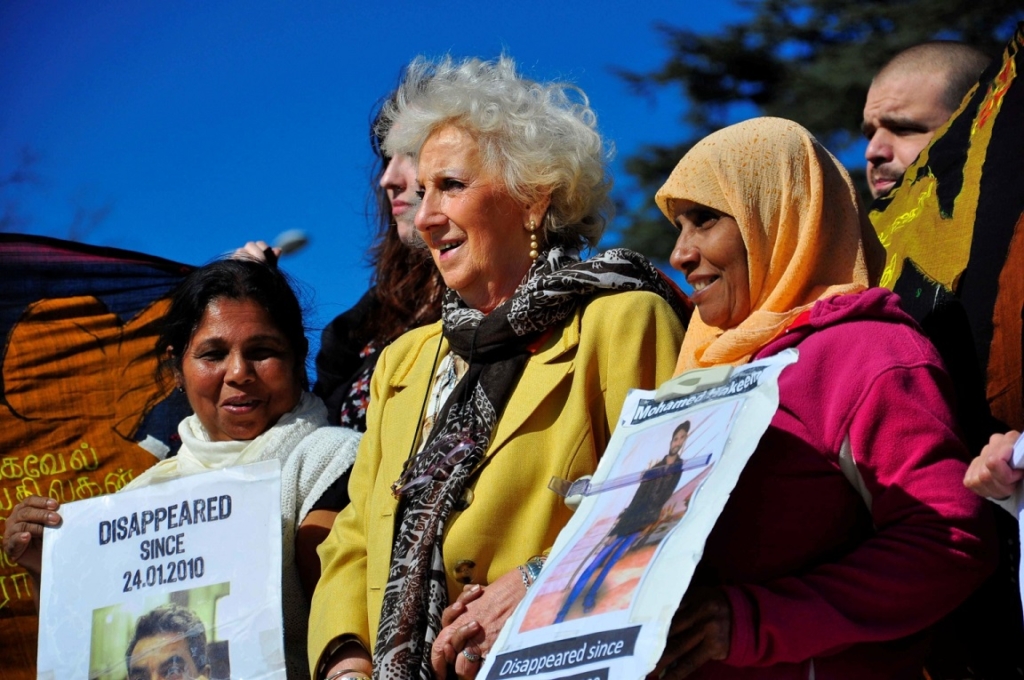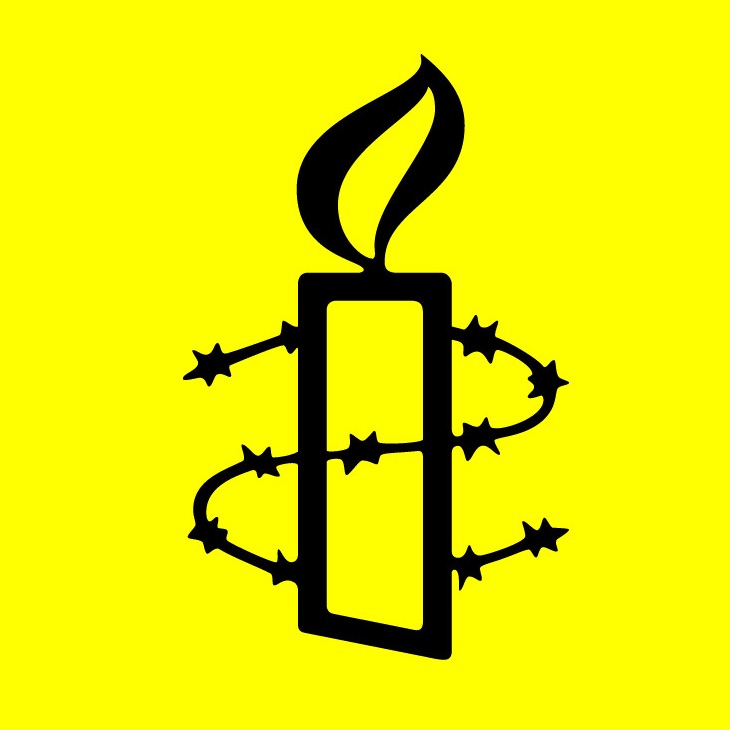Overview
Victims of enforced disappearance are people who have literally disappeared; from their loved ones and their community. They go missing when state officials (or someone acting with state consent) grabs them from the street or from their homes and then deny it, or refuse to say where they are. Sometimes disappearances may be committed by armed non-state actors, like armed opposition groups. And it is always a crime under international law.
These people are often never released and their fate remains unknown. Victims are frequently tortured and many are killed, or live in constant fear of being killed. They know their families have no idea where they are and that there is little chance anyone is coming to help them. Even if they escape death and are eventually released, the physical and psychological scars stay with them.
The Problem
Tool of terror
Enforced disappearance is frequently used as a strategy to spread terror within society. The feeling of insecurity and fear it generates is not limited to the close relatives of the disappeared, but also affects communities and society as a whole.
A global issue
Once largely used by military dictatorships, disappearances now happen in every region in the world and in a wide range of contexts. They are commonly carried out in internal conflicts, particularly by governments trying to repress political opponents or by armed opposition groups.
Who is at risk?
Human rights defenders, relatives of those already disappeared, key witnesses and lawyers seem to be particular targets.
Agony and danger for families
Family and friends of people who have disappeared experience slow mental anguish. Not knowing whether their son or daughter, mother or father is still alive. Not knowing where he or she is being held, or how they are being treated. Searching for the truth may put the whole family in great danger. Not knowing if their loved one will ever return often leaves their relatives living in limbo.
Men most targeted, women lead the struggle
Globally, the vast majority of victims of enforced disappearance are men. However, it is women who most often lead the struggle to find out what happened in the minutes, days and years since the disappearance – putting themselves at risk of intimidation, persecution and violence.
On top of this, the disappeared person is often the family’s main breadwinner, the only one able to cultivate the crops or run the family business. This is then made even worse by some national laws that don’t let you draw a pension or receive other support without a death certificate.
Arbitrary detention
Many victims of enforced disappearance have been arbitrarily arrested or detained – in other words, arrested or detained without a warrant of arrest.
Torture
A disappeared person is also at a high risk of torture since they are placed completely outside the protection of the law. A victim’s lack of access to legal remedies puts them in a terrifying situation of complete defencelessness. Victims of enforced disappearance are also at heightened risk of other human rights violations, such as sexual violence or even murder.
Disappearances Convention
The International Convention for the Protection of All Persons from Enforced Disappearance came into effect in 2010. It aims to prevent enforced disappearances, uncover the truth when they do happen and make sure survivors and victims’ families receive justice, truth and reparation.
The Convention is one of strongest human rights treaties ever adopted by the UN. Unlike other crimes under international law, such as torture, enforced disappearances were not prohibited by a universal legally binding instrument before the Convention came into force in 2010.
The Convention provides a definition of the crime of enforced disappearance and outlines necessary state action in order to both prevent the occurrence of the crime and to allow for the investigation and prosecution of those who perpetrate it.
Implementation of the Convention is monitored by the Committee on Enforced Disappearances (CED). At the time of ratifying or acceding to the Convention, or even later, a state may declare that it recognizes the competence of CED to receive and consider communications from or on behalf of victims or other states parties. The CED also provides authoritative interpretations of the Convention.
Where do Enforced disappearances happen?
Enforced disappearances are a serious problem in many countries, in all regions of the world; from Mexico to Syria, from Bangladesh to Laos and from Bosnia and Herzegovina to Spain. Recently Amnesty International has documented disappearances carried out in by some of the worst offending countries.
Syria

Some 82,000 people have been subjected to enforced disappearance in Syria since 2011. The overwhelming majority of those have vanished into a network of government detention centres, but more than 2,000 individuals have gone missing after being detained by armed opposition groups and the armed group that calls itself the Islamic State.
Amid the brutality and bloodshed of the Syrian conflict, the plight of those who have vanished after being arrested by the authorities or detained by armed groups is a tragedy that has been largely ignored internationally. Tens of thousands of families have been desperately trying to uncover the fate of their missing relatives. In July 2018, the Syrian government confirmed the deaths of at least 161 people known to have been forcibly disappeared since the start of the conflict.
Amnesty International is monitoring and campaigning against enforced disappearances and abductions, as well as other serious violations and abuses of human rights committed in Syria, since the start of the crisis in 2011.
Sri Lanka
Sri Lanka has one of the world’s highest number of disappearances, with between 60,000 and 100,000 people vanishing since the late 1980s.
The mass disappearance of those who surrendered at the end of the country’s armed conflict is a clear indication of the institutionalization of the practice, with the state concealing the fate and whereabouts of the missing.
Sri Lanka has made some progress on this issue when it criminalized enforced disappearances in March 2018. However, the government must do more to support these measures by proactively helping the affected families to uncover the truth about what happened to their relatives and loved ones .
In May 2018, an Amnesty International report called on Sri Lanka’s government to provide information to the families of the disappeared, with detailed lists and information of persons who surrendered to the armed forces in the final phase of the war.

Argentina
Perhaps the best-known instance of mass enforced disappearances in the 20th century was the last dictatorship in Argentina. During military rule in the South American country between 1976-1983, the security forces abducted around 30,000 people, many of whom are still unaccounted for.
Widespread as well as systematic human rights violations occurred, with torture and extrajudicial executions on a grand scale, including notorious “death flights” in which victims were dropped to their deaths from military planes or helicopters.
Amnesty International has long campaigned for justice for victims and conviction of the military officials and government figures suspected of criminal responsibility, many of whom have been brought to justice before ordinary civilian courts in recent years.
Zimbabwe
Every story of enforced disappearances is about an individual, and it is for these individuals that Amnesty International campaigns tirelessly.
One such case is that of Itai Dzamara, the Zimbabwean journalist and peaceful pro-democracy activist who disappeared on 9 March 2015 in Harare.
He had previously been targeted by state security agents, beaten, abducted and unlawfully detained. Since his disappearance, no meaningful investigation has taken place and his whereabouts remain unknown.
His wife Sheffra has told of her painful search to find out what happened to her husband.
“It is painful to live not knowing where your loved one is. I am still hopeful. Every day I think that he will come back, or that someone will tell me that he has been found. I am always pained when my children ask where their father is. I don’t have an answer for them. I am concerned that the issue of my husband is not being taken seriously, especially by a government that claims we are free,” said Sheffra Dzamara.
“I want to acknowledge the role that Amnesty has played in putting pressure and demands on the government to release Itai. I want the truth to come out. I want to be able to answer for my children, they are still young. They deserve an answer.”
Amnesty International Secretary General Kumi Naidoo’s first act in the position was to sign a letter to the future leader of Zimbabwe about Itai’s case.
Which human rights do enforced disappearances violate?
Every disappearance violates a range of human rights including:
- right to security and dignity of person
- right not to be subjected to torture or other cruel, inhuman or degrading treatment or punishment
- right to humane conditions of detention
- right to a legal personality
- right to a fair trial
- right to a family life
- right to life (if the disappeared person is killed or their fate is unknown).
What is Amnesty doing to prevent and seek justice for enforced disappearances?
Amnesty International is actively campaigning cases of people who have been subjected to enforced disappearance, and is continuing to pressure governments to determine the fate and whereabouts of all those who have been disappeared.
If authorities genuinely don’t know where people are being held, they need to make more effort to find out. If they do, they must release them, or provide details of where they died.
Amnesty International’s December 2017 report, Deadly but Preventable Attacks: Killings and Enforced Disappearances of Those who Defend Human Rights, revealed that states around the world are failing to effectively protect human rights defenders from preventable killings and secret detentions.
The organization calls on governments to:
- Investigate and, if there is sufficient admissible evidence, prosecute those suspected of criminal responsibility in fair trials before ordinary civilian courts without recourse to death penalty.
- Make enforced disappearance, either committed by state agents or armed non-state actors, criminal under national law and punishable by appropriate penalties which take into account its extreme seriousness.
- Implement the International Convention and accept the jurisdiction of the Committee on Enforced Disappearances (CED) to receive and consider communications from or on behalf of victims and other states parties.
- Make sure survivors and people who have lost their loved ones receive reparation – this includes compensation, rehabilitation, restitution and a guarantee that it won’t happen again.
- Abrogate any amnesty law or any other measure of impunity, like statute of limitations.

